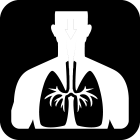Cancer causing substances subject to workplace management or avoidance
US OSHA - Carcinogens
US Department of Labor
HAPs subject to the Clean Air Act
US EPA - Hazardous Air Pollutants
US Environmental Protection Agency (US EPA)
Extended Red List substance to reduce in Living Building Challenge projects
Living Building Challenge 2.1 - Red List of Materials & Chemicals (retired in 2014)
International Living Future Institute (ILFI)
Chemicals of high concern
SCHF - Hazardous 100
Toxic-Free Future (formerly Safer Chemicals, Healthy Families (SCHF))
Candidate Chemical List
CA SCP - Candidate Chemicals
California Department of Toxic Substance Control (CA DTSC)
Assessment of regulatory needs
EU - PACT-RMOA Substances
European Union / European Commission (EU EC)
V3 2014 Substance of Concern List
BIFMA - e3/level Annex B list of chemicals
Business and Institutional Furniture Manufacturers Association (BIFMA)
Some Solvents
GSPI - Six Classes Precautionary List
Green Science Policy Institute (GSPI)
Chemicals of High Concern
MDH - Chemicals of High Concern and Priority Chemicals
Minnesota Department of Public Health
Chemicals of High Concern to Children
WA DoE - Chemicals of High Concern to Children
Washington State Department of Ecology (WA DOE)
Designated Chemical
CA DTSC - Biomonitoring California Chemical List
California Department of Toxic Substance Control (CA DTSC)
CoHC List (non SVHC)
CPA - Chemical Footprint
Clean Production Action (CPA)
2019 Substance of Concern List
BIFMA - e3/level Annex B list of chemicals
Business and Institutional Furniture Manufacturers Association (BIFMA)
Limit standard for volatile organic compounds content in printing inks (GB 38507-2020)
China's limit standard for volatile organic compounds
State Administration for Market Regulation - Standardization Administration of China
Limit standard for volatile organic compounds content in cleaning agents (GB 38508-2020)
China's limit standard for volatile organic compounds
State Administration for Market Regulation - Standardization Administration of China
Restrictions for Manufacturing Process
Google Manufacturing Restricted Substances Specification (v1.3)
Google
Chemicals of High Concern to Children
Vermont Chemicals of High Concern to Children
Vermont Environmental Health Division
Reportable Chemicals
MA Toxics Use Reduction Act (TURA) listed substances
Massachusetts Department of Environmental Protection
Food Contact Chemicals of Concern List (FCCoCL) - TIER 2
Food Contact Chemicals of Concern (FCCoCL)
Food Packaging Forum
ZDHC - MRSL v2.0 Candidate List
ZDHC - MRSL v2.0
Zero Discharge of Hazardous Waste Chemicals Programme
FSAP Food Packaging Product Stewardship Considerations
FSAP Food Packaging Product Stewardship Considerations
Food Safety Alliance for Packaging (FSAP)
FPF Priority Substance List from FCCdb
FPF Priority Substance List from FCCdb
Food Packaging Forum
Food Packaging Forum Priority Substances List
GreenScreen Certified Standard for Food Service Ware RSL
Clean Production Action (CPA)
Reportable Substances and Future Restrictions in Manufacturing Processes
Apple Regulated Substances Specification
Apple Inc.
GADSL Declarable Substances - Information is being collected for a non-regulatory purpose (D/FI)
Global Automotive Declarable Substance List (GADSL)
Global Automotive Stakeholder Group (GASG)
GreenScreen LT-1 (based on 2018 Chemical Footprint Project)
GreenScreen Certified Standard for Medical Supplies & Devices Silver-Gold RSL
Clean Production Action (CPA)
Potential ACUTE health effects (sudden or short-term)
OR OHA - High Priority Chemicals of Concern for Children's Health (HPCCCH)
Oregon Health Authority
Potential CHRONIC health effects (over time or long-term)
OR OHA - High Priority Chemicals of Concern for Children's Health (HPCCCH)
Oregon Health Authority
Reportable Substances and Future Restrictions in Products
Apple Regulated Substances Specification
Apple Inc.
2nd Round Priority Chemicals
CEPN - Chemicals Prioritized for Elimination or Substitution
Clean Electronics Production Network
ATSDR 2022 Substance Priority List
ATSDR’s Substance Priority List
US Centers for Disease Control (US CDC)
TSCA - Substantial Risk Notices
TSCA Chemical Substantial Risk Notices
US Environmental Protection Agency (US EPA)
Japan - CSCL
Japan - Chemical Substances Control Law
Government of Japan
Trade Union Priority List 2.0
ETUC - Trade Union Priority List 2.0
European Trade Union Confederation (ETUC)
CSCP - Reportable Ingredient List
California Safe Cosmetics Program - Reportable Ingredient List
California Department of Public Health (CDPH)
Data generation and assessment
EU - PACT-RMOA Substances
European Union / European Commission (EU EC)
Regulatory risk management
EU - PACT-RMOA Substances
European Union / European Commission (EU EC)
VOCs
AFIRM RSL v10 (2025)
The Apparel and Footwear International RSL Management Group (AFIRM)
OEKO-TEX STANDARD 100
OEKO-TEX® STANDARD 100
International Association for Research and Testing in the Field of Textile and Leather Ecology (OEKO-TEX)
 Likely to cause
Likely to cause
 Can cause
Can cause
 May cause
May cause














